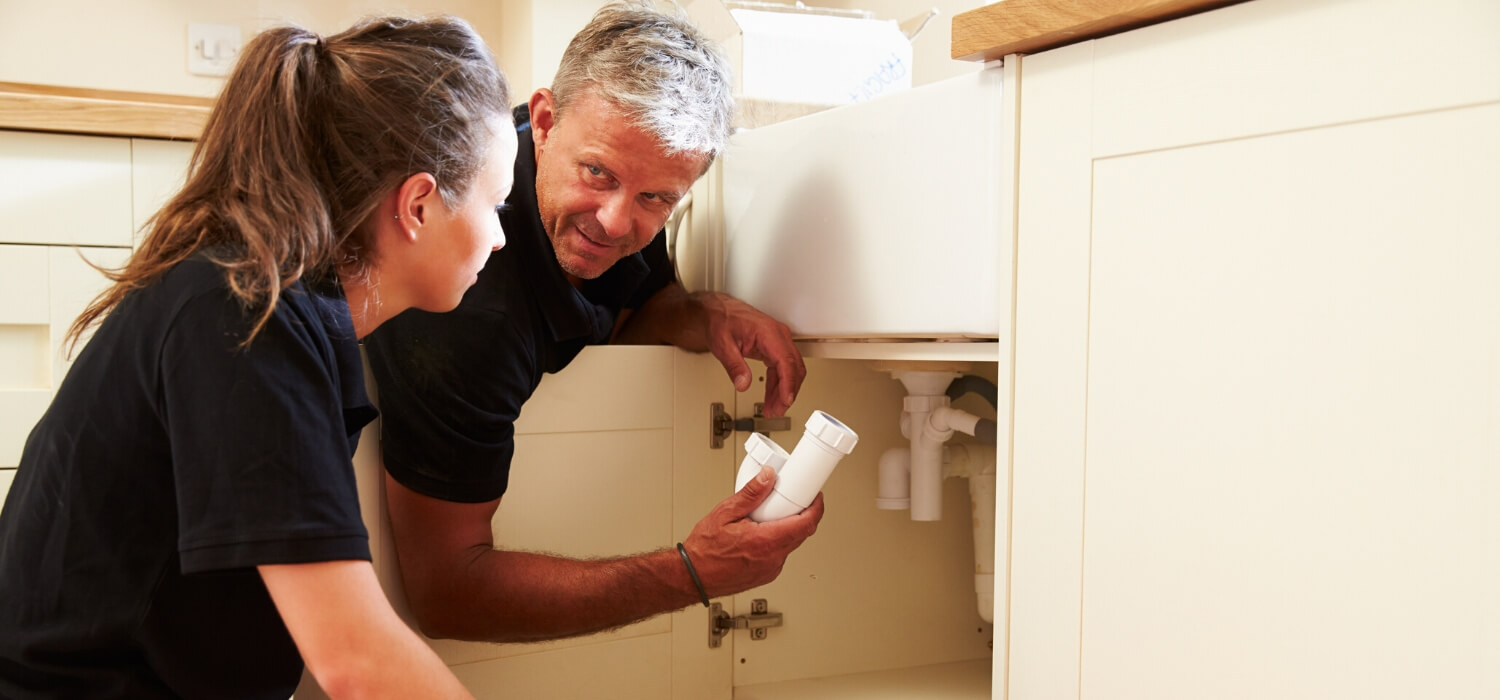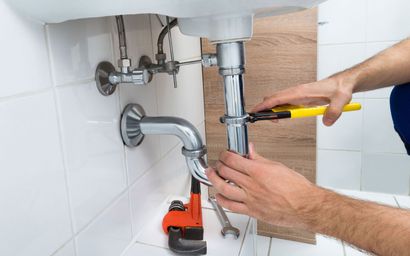Design of Your Home's Plumbing System: What It Matters
Design of Your Home's Plumbing System: What It Matters
Blog Article
We have come across this article about Anatomy of a House: Understanding the Components below on the net and felt it made good sense to discuss it with you here.

Understanding exactly how your home's pipes system functions is essential for every property owner. From delivering clean water for drinking, food preparation, and showering to securely getting rid of wastewater, a well-maintained plumbing system is essential for your household's health and wellness and convenience. In this extensive guide, we'll check out the complex network that comprises your home's pipes and deal tips on maintenance, upgrades, and dealing with common issues.
Introduction
Your home's plumbing system is more than just a network of pipes; it's a complex system that ensures you have access to clean water and effective wastewater removal. Understanding its elements and exactly how they collaborate can assist you protect against pricey repair work and make sure every little thing runs efficiently.
Standard Components of a Plumbing System
Pipes and Tubing
At the heart of your plumbing system are the pipes and tubing that carry water throughout your home. These can be made from different products such as copper, PVC, or PEX, each with its benefits in regards to sturdiness and cost-effectiveness.
Components: Sinks, Toilets, Showers, and so on.
Components like sinks, commodes, showers, and bath tubs are where water is made use of in your house. Recognizing just how these components attach to the pipes system assists in identifying issues and intending upgrades.
Shutoffs and Shut-off Factors
Shutoffs control the flow of water in your pipes system. Shut-off shutoffs are essential during emergency situations or when you require to make repair work, allowing you to separate parts of the system without interfering with water flow to the whole home.
Supply Of Water System
Key Water Line
The major water line attaches your home to the local supply of water or a private well. It's where water enters your home and is dispersed to different fixtures.
Water Meter and Stress Regulator
The water meter measures your water use, while a pressure regulatory authority guarantees that water flows at a secure pressure throughout your home's pipes system, stopping damage to pipes and fixtures.
Cold Water vs. Warm water Lines
Understanding the difference between cold water lines, which supply water straight from the main, and warm water lines, which bring warmed water from the hot water heater, assists in repairing and planning for upgrades.
Water drainage System
Drain Pipes Pipeline and Traps
Drain pipes bring wastewater away from sinks, showers, and commodes to the drain or sewage-disposal tank. Traps protect against drain gases from entering your home and also catch particles that might cause clogs.
Air flow Pipelines
Ventilation pipelines allow air right into the drain system, preventing suction that can slow down drainage and create traps to empty. Correct ventilation is essential for keeping the integrity of your pipes system.
Importance of Correct Drain
Ensuring proper water drainage avoids back-ups and water damage. Regularly cleansing drains and preserving catches can prevent expensive repair services and expand the life of your plumbing system.
Water Heater
Kinds Of Hot Water Heater
Hot water heater can be tankless or conventional tank-style. Tankless heating units warm water as needed, while containers store heated water for prompt usage.
Upgrading Your Plumbing System
Factors for Updating
Upgrading to water-efficient components or replacing old pipelines can enhance water top quality, decrease water costs, and enhance the value of your home.
Modern Pipes Technologies and Their Benefits
Check out modern technologies like smart leakage detectors, water-saving toilets, and energy-efficient water heaters that can conserve money and decrease ecological impact.
Expense Factors To Consider and ROI
Compute the upfront expenses versus lasting savings when thinking about pipes upgrades. Many upgrades spend for themselves via reduced utility costs and less repair work.
Exactly How Water Heaters Attach to the Plumbing System
Comprehending exactly how hot water heater link to both the cold water supply and hot water distribution lines helps in detecting concerns like insufficient hot water or leaks.
Maintenance Tips for Water Heaters
Routinely purging your hot water heater to get rid of debris, examining the temperature level setups, and evaluating for leakages can prolong its life expectancy and enhance energy efficiency.
Usual Pipes Concerns
Leakages and Their Reasons
Leaks can happen because of aging pipes, loose installations, or high water stress. Resolving leaks quickly protects against water damages and mold and mildew development.
Blockages and Clogs
Obstructions in drains pipes and bathrooms are typically triggered by flushing non-flushable products or an accumulation of grease and hair. Using drain displays and bearing in mind what decreases your drains can stop blockages.
Indications of Pipes Problems to Watch For
Low tide pressure, slow-moving drains pipes, foul odors, or unusually high water costs are signs of prospective pipes troubles that should be attended to quickly.
Pipes Upkeep Tips
Normal Assessments and Checks
Arrange yearly plumbing inspections to catch issues early. Look for signs of leaks, corrosion, or mineral build-up in taps and showerheads.
Do It Yourself Maintenance Tasks
Basic jobs like cleansing faucet aerators, checking for toilet leakages making use of color tablet computers, or insulating exposed pipes in chilly environments can avoid major plumbing issues.
When to Call a Professional Plumber
Know when a pipes concern calls for professional know-how. Trying complicated repair services without proper expertise can bring about even more damages and higher fixing prices.
Tips for Lowering Water Usage
Easy habits like dealing with leaks quickly, taking much shorter showers, and running full loads of washing and dishes can preserve water and lower your energy bills.
Eco-Friendly Pipes Options
Think about sustainable pipes materials like bamboo for flooring, which is durable and environment-friendly, or recycled glass for countertops.
Emergency situation Preparedness
Actions to Take Throughout a Plumbing Emergency situation
Know where your shut-off valves lie and how to shut off the water system in case of a ruptured pipe or significant leak.
Value of Having Emergency Contacts Helpful
Maintain contact info for neighborhood plumbers or emergency situation services readily offered for quick reaction throughout a pipes crisis.
Ecological Impact and Preservation
Water-Saving Components and Appliances
Setting up low-flow taps, showerheads, and toilets can dramatically reduce water use without sacrificing efficiency.
Do It Yourself Emergency Fixes (When Appropriate).
Short-lived fixes like using duct tape to spot a dripping pipe or placing a container under a leaking tap can reduce damages till a professional plumber shows up.
Verdict.
Understanding the composition of your home's plumbing system equips you to keep it effectively, saving money and time on fixings. By following routine upkeep regimens and staying informed about modern plumbing innovations, you can ensure your pipes system runs effectively for years to come.
The Anatomy of Your Home s Plumbing System
Understanding the anatomy of your home s plumbing system is essential for any homeowner. It not only helps in identifying potential issues but also facilitates effective communication with professionals when repairs or upgrades are needed. Your home s plumbing system is more than just pipes and faucets; it s a complex network that ensures the efficient and hygienic flow of water in and out of your house. In this blog, we ll dissect the crucial components of your home s plumbing system. For those in Antelope Valley, Brock Plumbing is your trusted partner for all your plumbing needs, ensuring your system functions smoothly and efficiently.
Water Supply System
Main Water Line: This is where your home s plumbing system begins. The main water line connects your home to the public water supply or a private well. Pipes and Shut-off Valves: Pipes distribute water throughout your home. Shut-off valves are crucial for controlling the flow of water and making repairs without shutting off the entire system. Drainage System
Drain Pipes: These pipes carry waste and water away from sinks, toilets, and showers. Vents: Vents allow sewer gases to escape and help maintain proper pressure in the drainage pipes, ensuring efficient flow of wastewater. Traps: Every fixture has a trap, a U-shaped pipe that holds water and prevents sewer gases from entering your home. The most common is the P-trap under sinks. Fixtures and Appliances
Fixtures and appliances are the most interacted with parts of your plumbing system. They include sinks, toilets, showers, dishwashers, and washing machines. Each fixture and appliance has its own supply and drainage connection, ensuring they receive clean water and can dispose of wastewater effectively.
Water Heating System
Your water heater is a crucial component, providing hot water to various fixtures and appliances in your home. It can be tank-based or tankless, with each type having its own set of advantages and maintenance requirements. Regular maintenance is essential to ensure efficient operation and extend the lifespan of the unit.
Sump Pump
In areas prone to flooding or with high water tables, a sump pump is an essential part of the plumbing system. It s installed in the lowest part of your basement or crawlspace and pumps out water that accumulates, preventing flooding and protecting your home from water damage.
Septic System
Homes that are not connected to a municipal sewer system have a septic system and an underground wastewater treatment structure. Understanding how to maintain your septic system is crucial to prevent backups, odors, and early system failure.
Conclusion
Your home s plumbing system is a complex and essential network, ensuring the efficient and hygienic flow of water in and out of your property. Understanding its key components helps in maintaining it properly and identifying issues before they escalate into major problems. For residents in Antelope Valley, Brock Plumbing is dedicated to providing top-notch services, ensuring that every part of your plumbing system is in perfect working order. Trust our team of professionals to handle all your plumbing needs, ensuring your home remains comfortable, safe, and well-maintained.
https://brockplumbinganddrains.com/blog/the-anatomy-of-your-homes-plumbing-system/

I came across that content on Anatomy of a House: Understanding the Components while doing a search on the internet. Are you aware of another individual who is curious about the subject? Take a moment to share it. Thank-you for your time spent reading it.
Visit Page Report this page